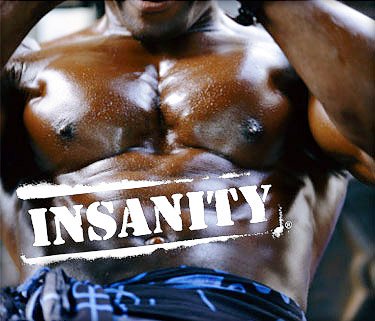Fitness Programs That Fit
Just do it, we hear. Do what?, we whine. Getting off your you-know-what is a tough hurdle. Even exercise experts admit fitness programs can be boring. Here's their advice for starting a fitness program -- and sticking with it.
Before you start, get real with yourself, says Gregory Florez, a personal trainer and spokesman for the American Council on Exercise (ACE).

"Look yourself in the mirror. If you can't picture yourself getting on that treadmill or stationary bike or going to that fitness club three times a week, don't do it," he tells WebMD. "Don't buy machines you aren't going to use. Don't join a gym if you're not going to feel comfortable going."
Then, get some professional advice on fitness programs, he advises. "You must have a plan that takes into consideration not only your goals but also your barriers, both real and perceived. Even if you are on a limited budget, you should get some beginning advice from a certified personal trainer." The cost ranges from $35 to $100 per hourly session.
No way, you say? Then find a few good videos on fitness programs, Florez suggests. There are lots of them out there.
Action Plan:
Aerobics, strength training, flexibility/balance training -- these are the components of any good fitness program, for people at any age and fitness level, explains Sal Fichera, MS, an exercise physiologist in New York City and also an ACE spokesman.
There's no getting around it: Walking and running keep your heart healthy and burn lots of calories. A few sessions each week remains the cornerstone for any fitness program.
Pedometers are great for charting a walking workout. Heart rate monitors will help you track your exercise intensity and help you improve your fitness program's efficiency. "I highly recommend them, especially if you're out of shape," Fichera tells WebMD. "You'll know when to ease up intensity, especially during hot weather. Like power outages more likely to happen in hot weather, so is heat stroke."
But strength training helps burn fat and build stronger bones, says Fichera. "Aerobics only keeps metabolic rate up during the aerobic activity. Afterward, your metabolic rate immediately starts to plummet. When there is more muscle density on the body, then metabolic rate stays elevated all the time."
Translation: If you have more muscle, your body will burn more calories when you're not exercising -- when you're just sitting at work, for example.
Calisthenics such as push-ups or sit-ups qualify as strength training -- although very difficult for some, he says.
Those stretchy "resistance tubes" are "very worthwhile," says Florez. "We use them in all our programs. When we first saw those 10 years ago, we thought it was a new gimmick. But those are now some of the most popular tools -- they're portable, and they take away any excuses. They're great for traveling, very portable."
Handheld weights are also popular. "But you must learn the correct techniques," Fichera tells WebMD. "I've seen people join clubs and waste time doing sets that don't accomplish anything. Learning correct techniques prevents injuries and generates results. It's paramount to getting results."
Also, you need to define your goals -- if you want a fitness program to simply burn fat or sculpt a hot body. To get results of any sort, it's important to understand technique, rather than just do multiple sets, he says. "I start clients with one basic exercise per major muscle group -- chest, back, shoulders, biceps, triceps -- one set for first week, then two."
Set a plan of progression. "Five-pound dumbbells might work now, but two months from now, they won't provide any burn because you're no longer stimulating muscle tissue, so you no longer get results," says Fichera. "You have to increase the resistance, use slightly heavier weights."
The Long Haul:
To help you stay motivated and get the best results, here's their advice:
- Create distractions for aerobic workouts. VCRs, TVs, sports radios, tiny CD players -- they all exist for a reason. Distractions are fine, as long as you maintain a good walking or running intensity. Don't get lulled into a slow pace that won't do you much good.
- Make your strength training workouts "meditative," Fichera adds. "It helps to visualize each muscle. If you can block out problems, get into the moment, get rid of the chatter in your mind, then it becomes more relaxing, more enjoyable."
- Plan your fitness program for the afternoon for maximum benefit. "Your body's core temperature in the morning has yet to reach its peak level," he says. "When you go out at 7 a.m., your body's still cold, even if you did a warm-up, and especially if you're deconditioned."
- Convince your company to hire a personal trainer for a few group lessons. "Have someone come in once a month, give you some really 'actionable' advice you can take away and do on your own," Florez says. "We do this a lot, and people love it."
- Hire your own personal trainer, who can develop a very specific fitness program for you to follow. Plan on meeting with your trainer periodically to update your program.
"The good news is, once you make progress, the intensity and frequency will change. Because your body is stronger, you're able to do more things," says Fichera.
Men over age 40, and women over 45, should see a doctor first if they have been inactive, according to the American College of Sports Medicine. If you have a chronic illness, such as diabetes or asthma, be sure your doctors knows. If you're younger, see a trainer who knows about fitness evaluation, says Fichera.
"Exercise heart rate" -- how well your heart responds during exercise -- is the gold standard test in evaluating fitness level, he says. "You may be surprised. A 50-year-old may find out he's healthier than some 20-year-olds."
You need to have the knowledge to use the programs ;)